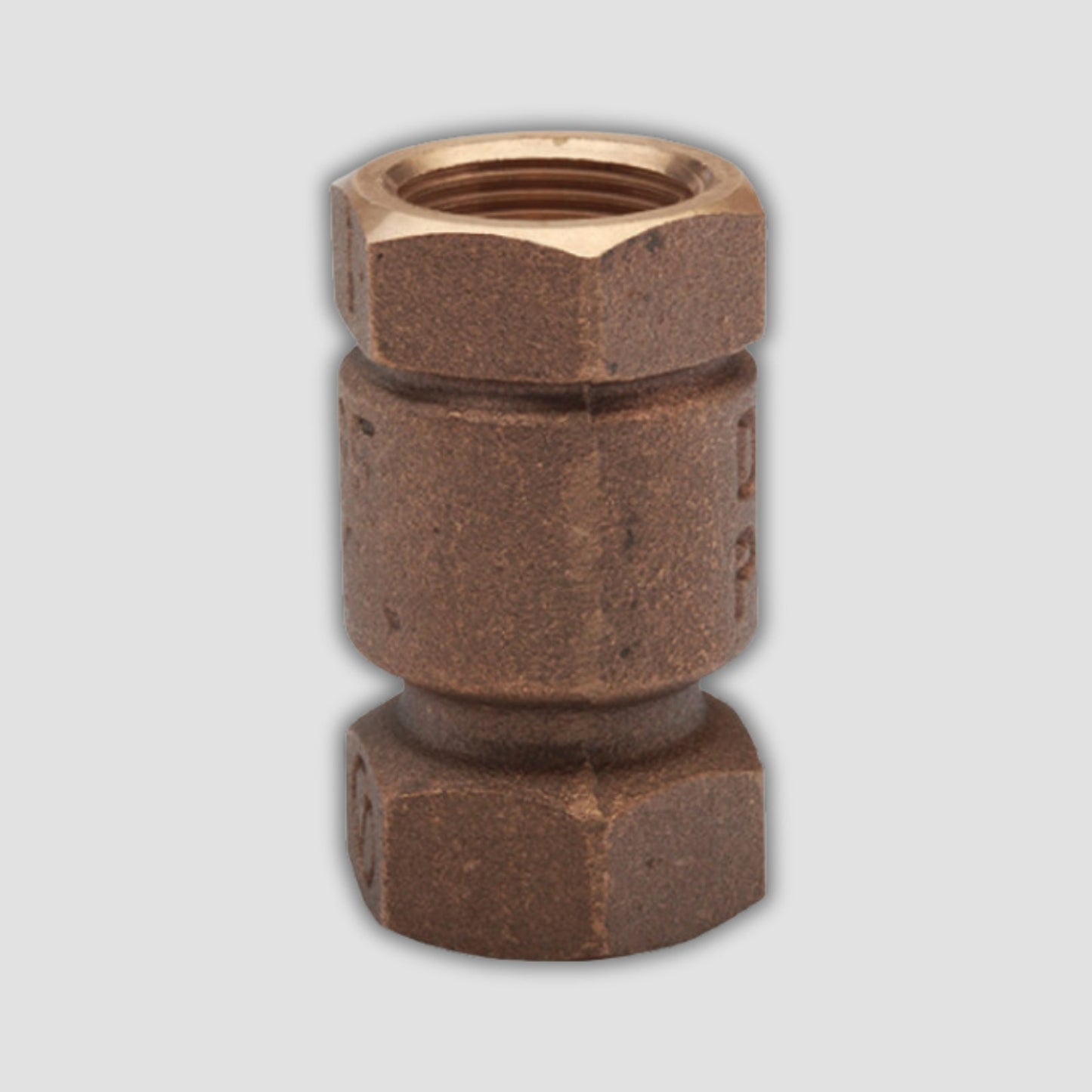Bronze Valves
Bronze Vertical Lift Check Valve – PN25
Bronze Vertical Lift Check Valve – PN25
Couldn't load pickup availability
The Bronze Vertical Lift Check Valve – PN25 is engineered for high-pressure systems where compact, vertical backflow prevention is essential. Designed to operate with upward flow, the precision-guided lift mechanism provides rapid closure when flow stops or reverses—ensuring reliable protection of downstream equipment.
Crafted from corrosion-resistant bronze and rated to PN25 (25 bar), this valve offers long-term durability in water, steam, air, and non-aggressive fluid applications. Ideal for vertical pipelines in industrial, marine, and HVAC systems, it delivers consistent, maintenance-friendly performance under pressure.
Key Features:
PN25 pressure rating for robust performance in high-pressure systems
Vertical lift design for upward flow applications
Fast-closing internal disc for effective backflow prevention
Bronze body for corrosion and wear resistance
Suitable for water, steam, air, and process fluids
Ideal for marine, plant rooms, and industrial system protection
Share

FAQ's
What is the difference between a valve and an actuator?
What types of actuators are available?
The main types of actuators are:
Pneumatic actuators – use compressed air for fast, reliable operation.
Electric actuators – use electrical power for precise control.
Hydraulic actuators – use fluid pressure for high-torque applications.
Each type offers unique advantages depending on the environment, media, and system control needs.
How do I choose the right actuator for my valve?
To select the correct actuator, consider:
Valve type and torque requirement
Power source available (air, electric, or hydraulic)
Operating environment (temperature, humidity, hazardous area)
Control signal type (on/off or modulating)
Matching actuator torque and compatibility with the valve’s ISO mounting ensures reliable performance.
What are the main types of valves used in automation?
The most common valves in automated systems include:
Ball valves – for tight shutoff and quick operation.
Butterfly valves – for larger flow control with compact design.
Globe valves – for precise throttling and flow regulation.
Check valves – to prevent backflow.
Gate valves – for full bore flow isolation.
What’s the difference between a double-acting and spring-return actuator?
Double-acting actuators use air (or power) to both open and close the valve.
Spring-return actuators use air to open (or close) the valve, and a built-in spring to automatically return it to a safe position when power or air is lost — ideal for fail-safe operation.
How often should valves and actuators be serviced?
Regular maintenance intervals depend on operating conditions, but a good rule of thumb is to inspect every 6–12 months.
This includes checking for leaks, lubrication, seal wear, and actuator responsiveness to prevent unexpected downtime.

